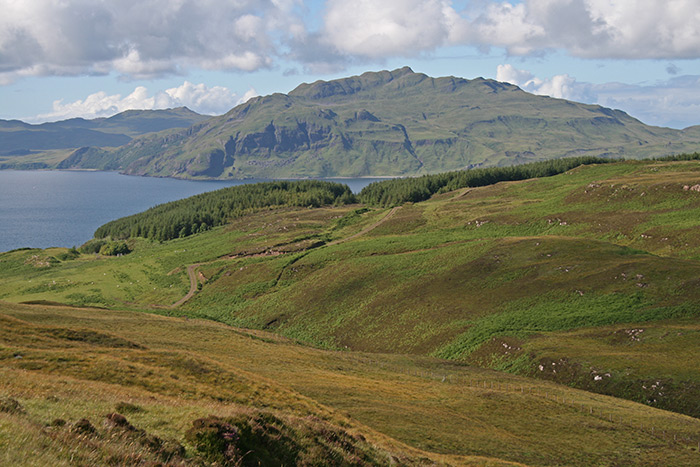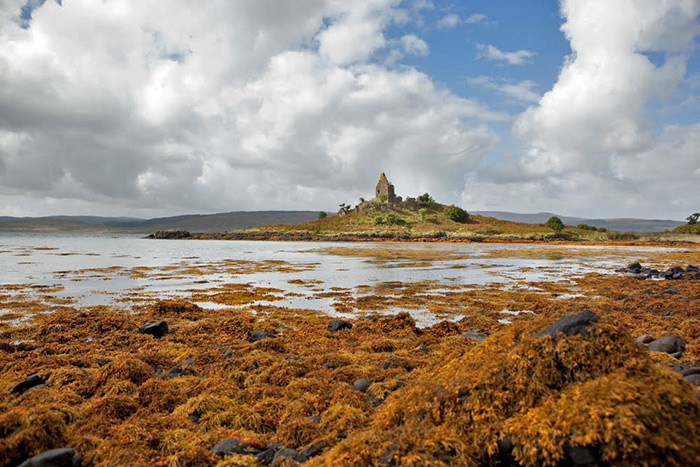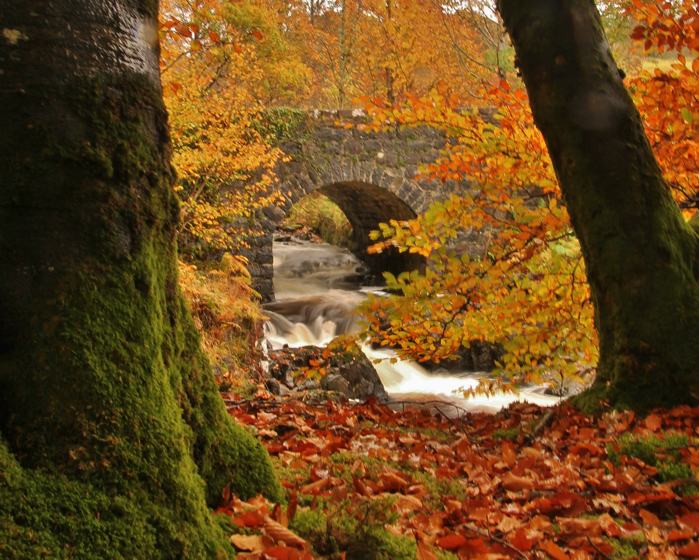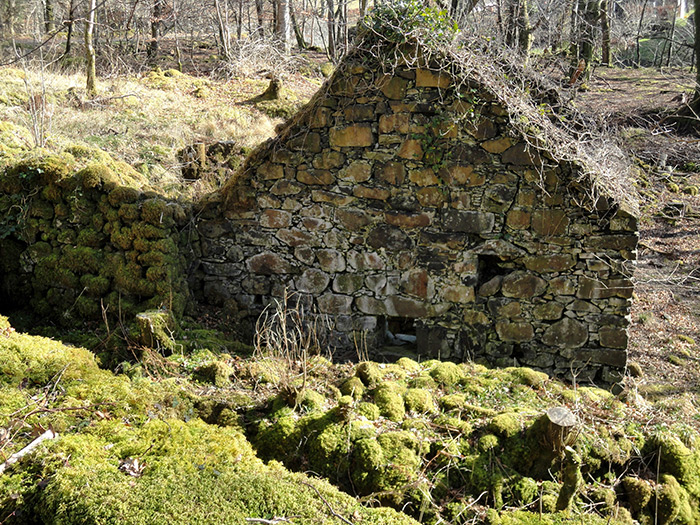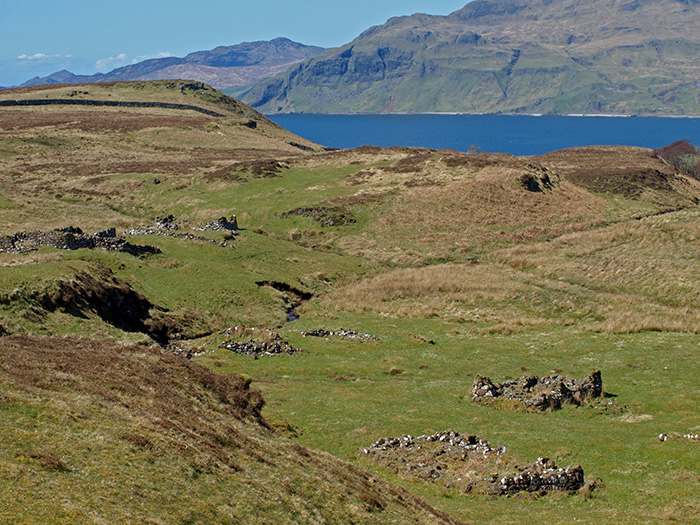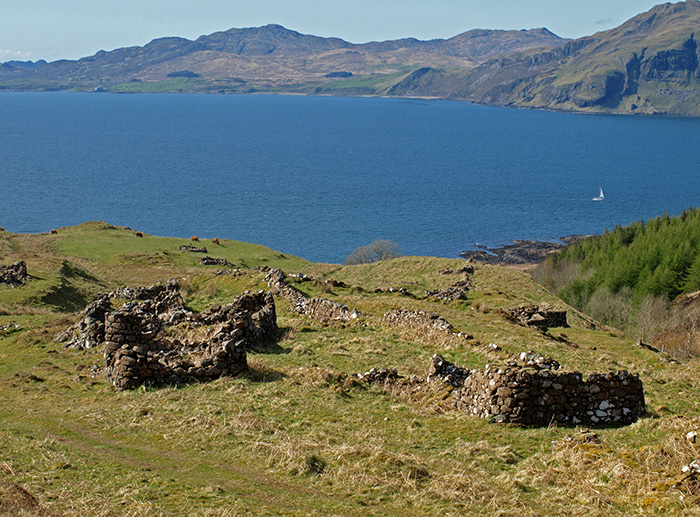History

Drimnin formed part of the ancient Maclean clan territory and the remains of the ancient Maclean castle, which guarded the entrance to the Sound of Mull, can be found alongside the Chapel of St Columba., However, unfortunately Allan, the last Maclean of Drimnin whose tomb lies on the Estate, commanded a division of the Maclean clan in the Jacobite cause at Culloden and the lands were later sold in bankruptcy by Charles Maclean in the late 1700s.
A succession of short-lived owners, led to the acquisition of the Estate by Sir Charles Gordon in 1835 for the sum of £5,000. Sir Charles was a leading Edinburgh lawyer and President of the Royal Scottish Agricultural Society. He set about making the place fit for a gentleman of his means and position, extensively remodelling and expanding Drimnin House in the Italianate style popular at the time, building the chapel (for he was a Roman Catholic in an otherwise staunchly Protestant area), appointing a chaplain and building The Hermitage to house him, and improving the agriculture.
Drimnin’s brief encounter with prosperity was to be cut cruelly short by Sir Charles' untimely death in 1845, leaving his widow, Lady Gordon, to struggle on alone and with reduced means. His death marked the beginning of the Estate’s slow decline, which was marked by tragedy and a succession of unfortunate events.

The first of these was the fire in Drimnin House in 1849, which gutted the house. Lady Gordon’s daughter, Margaret, wrote to her brother saying ‘Mamma is so knocked up that she cannot write to you but she told me to tell you that a most dreadful accident has befallen us, last night Drimnin House was in flames & nothing now remains except two or three broken ruins.‘. Undaunted by this fire and an insurance dispute, the widowed Lady Gordon set about rebuilding on a grander scale in the idiosyncratic neo-gothic style that survives today. To accommodate the family during the five year project, she doubled the size of the old drovers’ inn at Achnacriche and made that the temporary family home.
Never popular locally, Lady Gordon conducted a vicious programme of clearances in the early 1840s and 50s, evacuating the villages of Auliston, Lower Auliston, Carraig, Port a Bhata and Sornagan on the Estate and displacing several hundred impoverished tenants. A few were resettled on the island of Oronsay to the north of the Estate, only to be cleared again from there in 1868. In her later years, Lady Gordon suffered from increasing madness and died in 1881. She was survived by her daughter, who tragically died of gunshot wounds in the gun room, probably taking her own life. With the gradual decline of the Gordon dynasty, serious efforts were being made to sell the Estate in the 1920s to the distress of one family member who wrote that ‘without land we are nothing’. However, in the aftermath of the First World War, no buyers came forward: the male staff needed to run such a place had been decimated in the war and the upper classes were more concerned with trying to erase memories of the war, by enjoying the high life in London or Edinburgh. The Gordon descendants struggled on until the Second World War but gave up in 1943, selling the Estate to Miss Alice Horsman KC for only £7,000 – less than Sir Charles had paid in real terms and only just over £200,000 in today’s money.
Miss Horsman had broken new ground by becoming one of the very first female barristers to be appointed King’s Counsel (or to ‘take silk’), but she suffered the debilitating early onset of deafness which had cut short her courtroom career. Instead she took to farming on the hills above Tobermory, from where she could see across the Sound of Mull to Drimnin. When the Estate came on the market she jumped at a bargain. As a spinster she was the sole resident of Drimnin House, with heat only from open fires, electricity from an ancient Lister generator, dubious plumbing and a building that was crying out for extensive repair.
During her 35 year occupancy until her death in the house in 1978, Alice lived alone, but was visited frequently by friends and relatives. She overcame her deafness by using a traditional megaphone the wrong way round as an ear trumpet, read profusely and widely (as her book collection attests), and enjoyed an adventurous life. She is reported to have sailed to Bergen in Norway, navigating only by means of a school atlas, skied wildly on the snow-covered slopes behind the house going head first over a stone wall and undertook numerous adventures in Africa. Sadly the Estate continued its long term decline; the house sprang increasing numbers of leaks and wood rot sapped its strength; the chapel became a ruin; the breathtaking views from Achleanan farmhouse came to be enjoyed only by livestock as it was converted to a shearing shed and pens; and the apple trees in the walled garden were reputedly cut down to prevent theft of their fruit by local residents.
On Alice’s death responsibility for the Estate passed to her nephew, John Horsman, also a lawyer by training but then farming in Suffolk. For the first time in many decades the house no longer had a permanent occupier, but John and his wife Jill welcomed many enthusiastic visitors to Drimnin, planted or protected much of the current woodland, and cared for the Estate until its sale to the current owners in 2002.
In recent years, the Estate has been undergoing extensive restoration. Achleanan, the old lodge, and the former housekeeper’s residence have been brought back into use as dwellings for holiday lets. The Hermitage, Ach na Criche, The Mains (home farm), the boat house and Drimnin House have been restored; cattle farming has been expanded; new woodlands have been planted and conservation of the ancient woodlands continued.
Today the Estate is a busy farm, offering stalking, fishing, cycling and hiking activities, has a growing variety of holiday accommodation, is home to a resident wildlife and landscape artist, and can host weddings and musical events in the recently restored chapel. The farm has Luing and Highland cattle, a variety of sheep and wild deer on the hill, sells its meat locally. Visitors come to walk the old drove road to the former inn at Doirlinn or to explore the rugged coast, yet Drimnin retains the uniqueness that has always been its hallmark – a peaceful seclusion where human beings can be absorbed by the sea, the hills, the sky, history and a profusion of wildlife.
Drimnin Estate Archive

Early inhabitants of Drimnin left behind structural evidence of their presence such as the St Columba's Stone which can be found on the moorland above Drimnin and the Estate is fortunate in having an extensive collection of documents from the Gordon era as well as a library of papers assembled by the late Joanne Semple, who originated from Onich and stayed at the remote Drumbuidhe farmhouse within the Estate. It is intended to publish parts of these collections on the website in due course but researchers are welcome to access them at Drimnin by arrangement. Contact the Estate Office for details.








